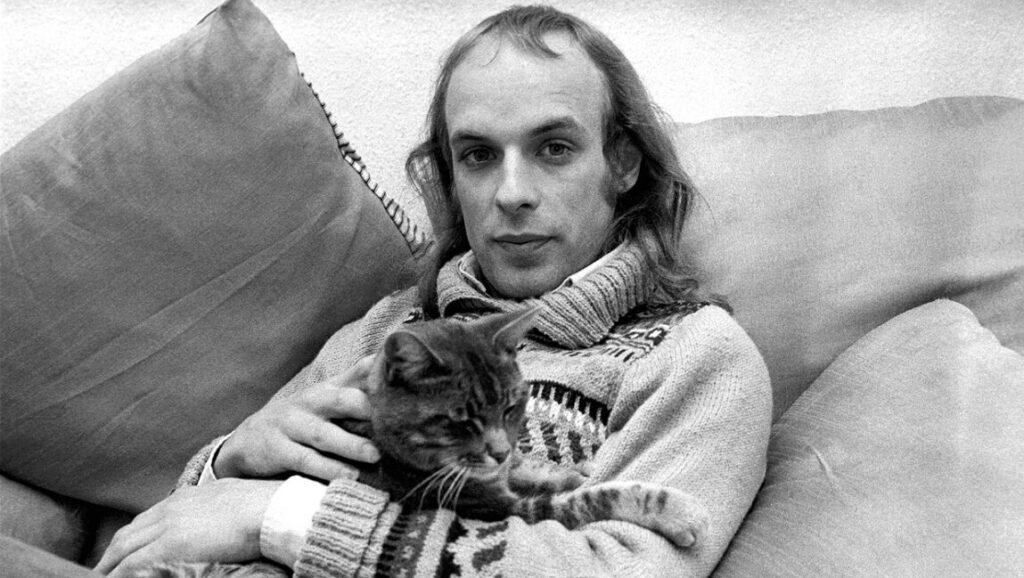Brian Eno will always be best known for his invention of ambient music (or at least its coinage) and for his work as the producer extraordinaire behind such classics as Remain In Light, The Joshua Tree, and Bowie’s Berlin Trilogy, but the avant garde, pre-ambient rock he made in the mid-’70s is just as demonstrative of his forward-thinking as anything else in his oeuvre. His early string of post-Roxy Music records are still rooted in the glammy art rock of his former band, but uninhibited by Bryan Ferry’s constraints, Eno’s predilection for electronic experimentation is given full reign. Here Come The Warm Jets is his solo debut, released two years before he was famously struck by the concept for ambient music while lying in a hospital bed recovering from a car accident; its ten songs are still fundamentally pop songs, largely devoid of the overt ambient foreshadowing that would slowly infiltrate his next few records. What is strikingly evident, however, is Eno’s acute concern for musical texture: though situated in a pop context, here the emphasis is on exploring unique and unconventional sounds. Opener “Needles In The Camel’s Eye” is awash in wiggly guitar riffs and lathered in a coat of reverb, the guitars so densely layered that they quickly become difficult to distinguish as such, instead forming a sort of amorphous mass undulating at the top of the mix. Meanwhile “Cindy Tells Me” sounds like a British Invasion song overtaken midway through by a storm of electronic locusts. This manipulation of synths and guitars is a technique that he also extends to his own voice: it’s simply another melodic and sonic device, one that can be contorted into various shapes and sizes like any other sound. And just as the lines between synth, guitar and percussion are often blurred, so too are those separating voice and instrument: “Dead Finks Don’t Talk” is punctuated by bird-like yelps, and a monotonous march of “Ha ha ha ha”’s which underscore Robert Fripp’s buzzy guitar; “Driving Me Backwards” finds him wailing over detuned piano and atonal guitar squeals, an echo effect lending his voice a feeling of hauntedness. Eno’s lyrics tend to be nonsensical, conjured via quasi-Dadaist games of association, but the words are not so important as the way they interact with the other sounds.
His is not an attempt to synthesize pop music and the avant garde, but rather he embraces the incongruity of such a collision, and seeks to explore the possibilities within it.
And sometimes the words still manage to be piercing, like “Baby’s On Fire,” which finds more of Fripp’s jagged guitar noodling sandwiched between some of Eno’s most evocatively grotesque lyrics: “Baby’s on fire / Better throw her in the water / Look at her laughing / Like a heifer to the slaughter.” Given his lack of a traditional musical background and his decidedly unorthodox approach, one could easily misconstrue a narrative in which Eno is made out to be a mere sonic tinkerer rather than a musician proper, but Here Come The Warm Jets is rather definitive proof that Eno can do more than craft soundscapes — he can write a damn good pop song, too. Though Taking Tiger Mountain By Strategy and Another Green World would continue his development towards loftier, more abstract accomplishments, this remains probably his strongest batch of actual songs. Strip away the complex electronics and lengthy instrumental interludes and many of these melodies could pass for something by the Kinks, or even the Beach Boys. Ultimately, though, what makes Eno’s early work special is the way he brought these two modes together. His is not an attempt to synthesize pop music and the avant garde, but rather he embraces the incongruity of such a collision, and seeks to explore the possibilities within it. The record’s title track is one of the most striking pieces of music he’s ever made, formed around a simple, unchanging melody played on a guitar that he describes as sounding, appropriately, like a “warm jet.” As the song builds, an out of sync drum track eventually catches up and rises in the mix, accompanied by a thick chorus of voices (“We’re down on our knees and we’ve nothing to say”) which only break through in the song’s final minute. It’s a baffling mix of discordant elements, and yet it’s inexplicably rapturous — a perfect representation of Eno’s idiosyncratic appeal.
Part of Kicking the Canon – The Album Canon.


Comments are closed.